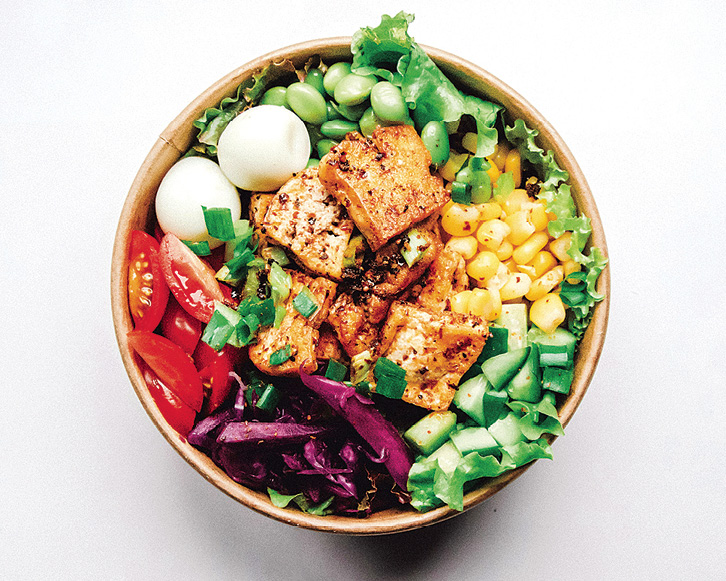Everyone, every day, breaks a fast by having a first meal. The “when” and “what” of that meal can vary from person to person and still support good health.
When
Some people roll out of bed ready to eat. Other people need a little time for their appetite to kick in, and still others aren’t ready to eat until they’ve been awake for hours. Is one schedule better than the others?
Eating first thing in the morning is an ingrained part of our culture, and for good reasons. The old adage of “Eat breakfast like a king, lunch like a prince, and dinner like a pauper” is still sound advice. Studies about the benefits of a balanced breakfast demonstrate that eating at the start of the day:
- Jump-starts your metabolism by providing fuel and nutrients.
- Increases focus. Re-fueling revs up your brain, helping you to think and feel better.
- Improves heart health and lowers the risk of diabetes.
But what about folks that don’t like to eat right away in the morning? That’s fine! It’s important to listen to your body’s cues about when, what, and how much to eat. If the idea of “eating like a king” is just too much for you to stomach, feel free to eat a small, nourishing “snack-fast” or to delay a more substantial meal until you’re ready. Pay attention to the way you feel when lunch rolls around. If you’re ravenous, that’s a sign that you’ve ignored earlier hunger signals. It’s better to spread out your food intake than to be so hungry that you overdo it when you finally get the chance to eat.
What
The “what” of breakfast can be as comforting or exciting as you like! The ideal breakfast provides:
Protein to keep muscles strong and provide long-lasting energy. Some options include:
- Eggs
- Unsweetened yogurt (add your own sweetener to control the sugar)
- Tofu (try scrambling like eggs or pan-frying slices)
- Nuts and seeds (nutrient-dense powerhouses that provide protein and fiber)
- Beans (great in a tortilla, or whip up a batter from chickpea flour. You can cook it like a pancake or bake it as a flatbread. Recipe below.)
Carbohydrates are faster-burning fuel. You’ll find good sources in:
- Whole grain products (oatmeal, whole grain baked goods, brown rice, quinoa, etc.)
- Fruits and vegetables (fresh, frozen, or canned)
- Dairy products or non-dairy alternatives (beverages, spreads, cheeses, etc.)
Fats provide slow-burning fuel and are necessary for the absorption of fat-soluble vitamins:
- Spread a little butter or non-dairy spread on your whole grains
- Drizzle some olive oil over the veggies
- Keep in mind the fat that comes “built-in” to nut butters and dairy products
But stay alert! Common breakfast foods often have ingredients that should be minimized. For instance, meats such as bacon and sausage have lots of saturated fat and sodium. Consider using them as literal sprinkles on top instead of the centerpiece. Boxed cereals and baked goods are often loaded with sugar and short on fiber. Read the label to find out which ones are really desserts masquerading as breakfast.
If you’re ready to start building a better breakfast, here are some “out of the cereal box” ideas to get you started:
- Bagel and veggies: Spread hummus on a whole-grain toasted bagel. Top with sliced cucumbers and tomatoes. Sprinkle with olive oil. Go wild—add some kalamata olives and feta cheese.
- E.G.G. (egg, greens, and grain): Sauté greens with garlic, pile on top of left-over whole grains, and finish with a poached or fried egg. Jazz it up with your favorite hot sauce.
- Socca, made from chickpea flour (a.k.a. garbanzo flour or besan flour), is an ancient food. A staple in India for centuries, it made its way to the Mediterranean where it’s used to make this versatile flatbread:
Socca
Ingredients:
- 1 cup chickpea flour
- 1 cup water
- 1/2 teaspoon kosher salt
- 2 tablespoons extra-virgin olive oil, divided
Directions:
In a blender, combine chickpea flour, water, salt, and 1 tablespoon of olive oil. Blend until smooth. Let sit for 30 minutes to allow chickpea flour to soften, or store overnight in the refrigerator.
Arrange a rack in the upper third of the oven. Place a 10-inch cast-iron skillet on a rack; preheat the oven to 450 degrees F.
When the oven is preheated, remove the skillet. Carefully pour remaining 1 tablespoon of olive oil into the skillet, swirl to cover the bottom, add batter, and bake for 10 minutes.
Turn oven to broil. Watching carefully, broil socca until golden brown, 4-5 minutes.
Slice and serve warm with desired toppings.




